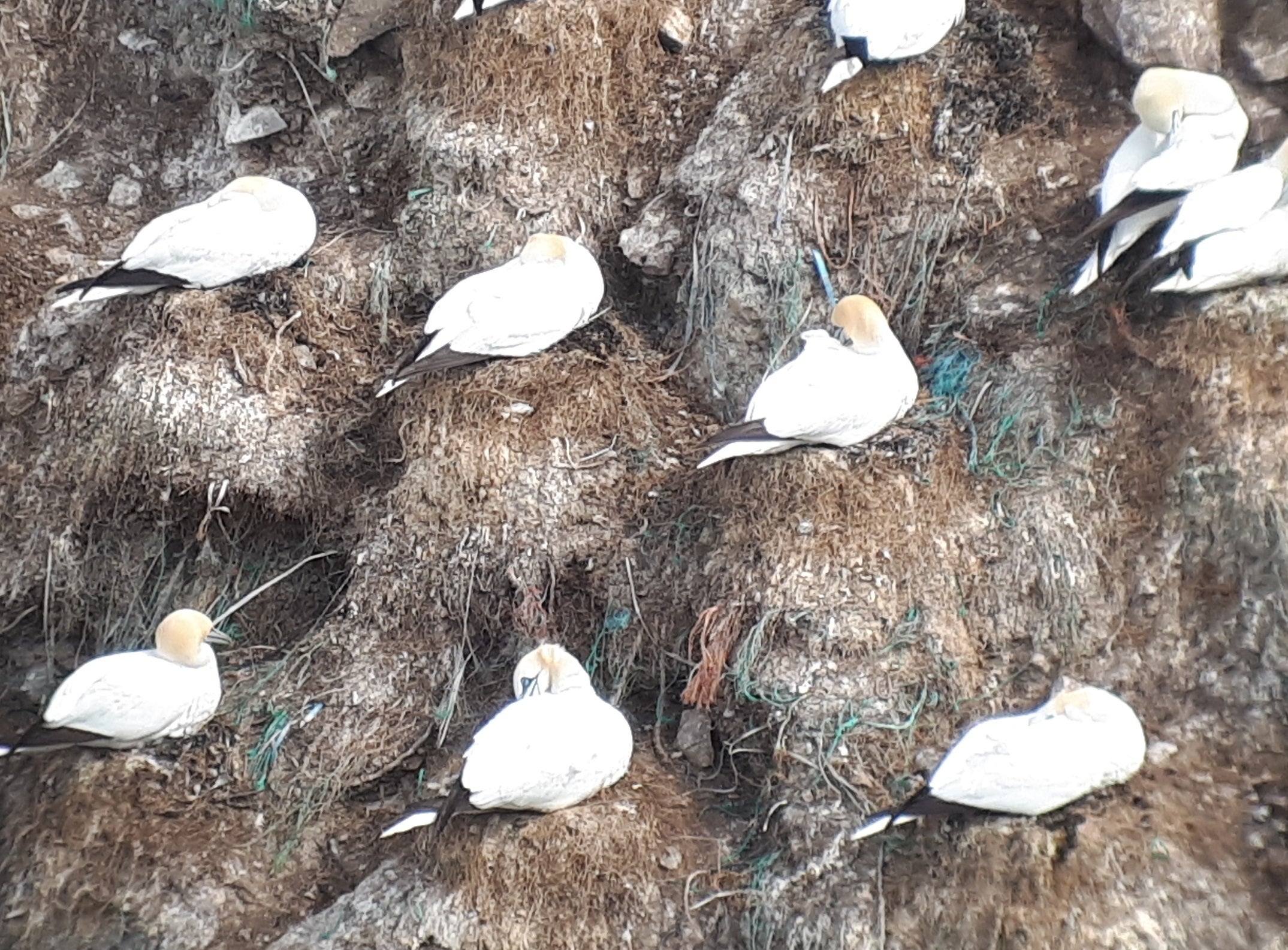Growing level of plastic in sea birds’ nests highlights worsening ocean pollution
New technique measures how much plastic gannets are building nests with

With a bleak nod to the runaway plastic pollution permeating the natural world, scientists studying seabirds have developed a new technique of measuring how much of the human-made waste is turning up in their nests.
A research team led by scientists at the Natural History Museum in London studied northern gannets – the UK’s largest seabird species – in order to develop what they hope can be a new indicator of the deteriorating health of the seas.
As plastic debris becomes “increasingly common in seabird nests”, the ability to keep records of this changing trend could become an important new means of studying human impacts on the world, the scientists said.
While records of plastic ingestion and entanglement in seabirds date back to the 1960s, the literature regarding debris in bird nests is comparatively limited, the research team noted, and as such have created what they hope can become a standardised method to collect data in a consistent manner – ensuring future studies can be comparable.
The new technique works by using image processing software which superimposes a grid onto a photograph of the nests and then the computer counts the number of cells with and without plastic debris.
This allows researchers to assess hundreds of nests easily.

“Establishing such a straightforward, accessible and repeatable method is crucial to be able to see change over time, and also allows monitoring to happen without disturbing nesting birds,” the research team said.
The method is also easily adaptable and could therefore be applied to other seabird species and terrestrial birds which incorporate plastic in their nests.
Dr Alex Bond, senior curator in charge of birds at the Natural History Museum, said: “Having a robust, repeatable, and accessible method to measure how much debris is in a nest is a huge step forward.
“Previously, we could only use a present/absent classification without physically taking the nest apart.
“For gannets, who use the same pedestal nests year on year, that just wasn’t feasible or ethical.
“Now, with some photographs, we can figure out how much debris is in each individual nest, and how that might change over time. It’s a really powerful tool.”
The Natural History Museum said the research ties in with their current free exhibition Our Broken Planet: How We Got Here and Ways to Fix It, which explores why and how our relationship with the natural world needs to change, and is running ahead of the global UN conferences of COP15 on biodiversity and COP26 on the climate crisis.
The research is published in the journal Marine Pollution Bulletin.
Join our commenting forum
Join thought-provoking conversations, follow other Independent readers and see their replies
Comments